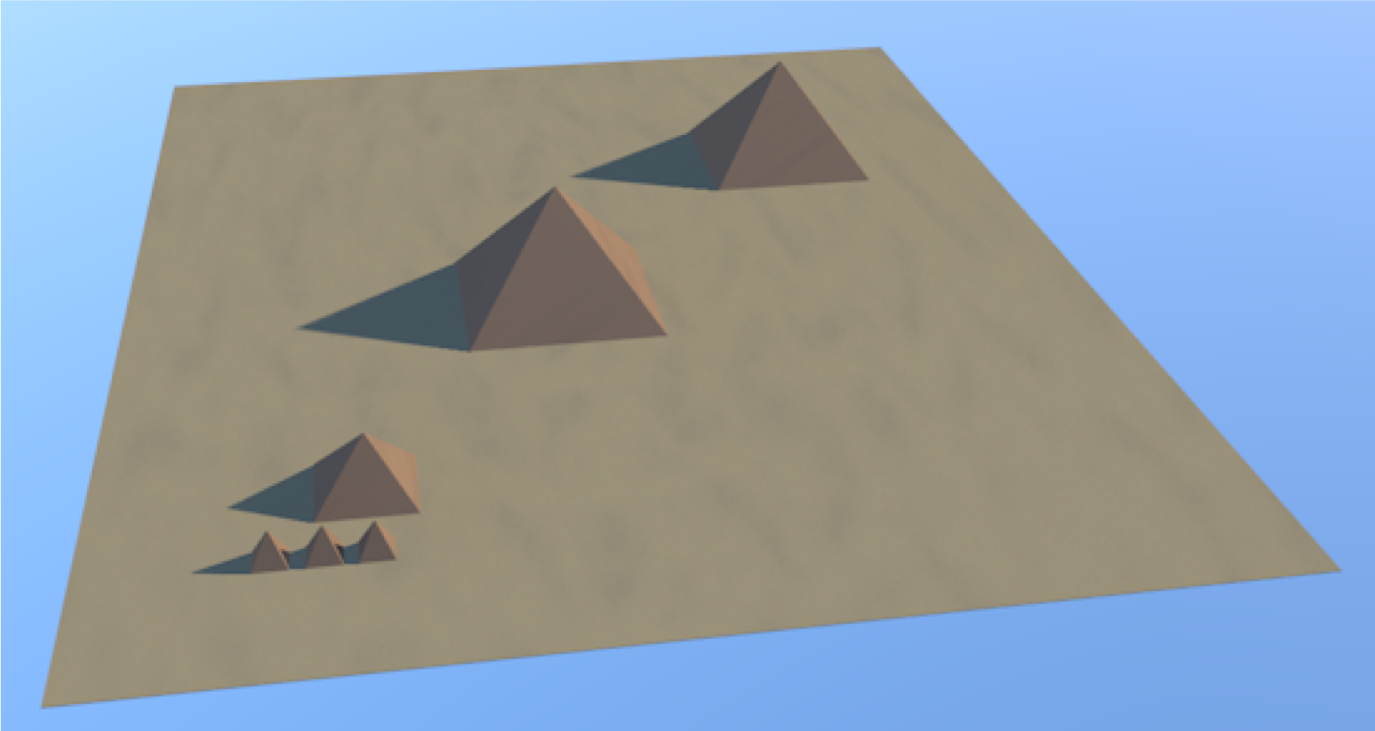
Technichal Specifications
How to use this exercise?
3D-printed forms for better representation of data for technic and geography.
Number of pieces of this exercise
6
General description
The model consists of 7 parts. First, there is a base plate that represents the environment. This is made of a cardboard with 100x100cm. In the next step, the pyramids are created, whose dimensions correspond to the truth in the scale. After the pyramids, which resemble an isosceles triangle, have been established, the exact points of view are determined on the base plate. The dimensions are predetermined so that the student can recognize the center of the pyramid on the basis of given dimensions / distances or with the help of the coordinate system, and thus can place the pyramids.
CHEOPS: Length: 21.5 cm, high: 14,3 cm
CHEPHREN: Length: 23 cm, high: 14,6 cm
MYKERINOS: Length: 10,3 cm, high: 6,5 cm
LITTLE PYRAMIDS: (x3): Length: 3,5 cm, high: 3,5 cm.
Additional Material
Models used:
License Info
Attribution 4.0 International (CC BY 4.0) https://creativecommons.org/licenses/by/4.0/You are free to:
Share — copy and redistribute the material in any medium or format
Adapt — remix, transform, and build upon the material
for any purpose, even commercially.
Under the following terms:
Attribution — You must give appropriate credit, provide a link to the license, and indicate if changes were made. You may do so in any reasonable manner, but not in any way that suggests the licensor endorses you or your use.
No additional restrictions — You may not apply legal terms or technological measures that legally restrict others from doing anything the license permits.
Learning Specifications
How can the model be used in class?
The model of the pyramids is divided into 2 parts. On the one hand, the historical part: the pyramids of Giza (Egypt) occupy an area of about 6,359 ha. The pyramids of Giza in Egypt are among the best-known and oldest surviving buildings of humanity and are the only surviving of the 7 wonders of the world. There are the pyramids, which differ in their shape and distinguish the name… There are the Great Pyramid (Cheops Pyramid), the Middle Pyramid (Chephren Pyramid), the Little Pyramid (Mykerinos Pyramid) and the corresponding chamber pyramids. The different pyramids have different uses, with the construction of the pyramids Nebenpyramiden, temples, burial grounds and working villages have arisen and it has expanded steadily.
In the second part you can use the mathematical form. A body is called a pyramid when bounded by, for example, a triangle as a base and triangles as side surfaces sharing a point S. The point S is called the top of the pyramid. The distance of the top of the pyramid from the base is called the height of the pyramid.
The theorem of Pythagoras can be formulated.
The model can be used to teach about the structuring of historical theory, geographical placement, and mathematical formulas in practice, each pyramid representing the content individually, but also having a variety of different topics. Whether it is the subject of the burial chamber, the king or, mathematically speaking, an equiangular triangle. This allows students to better understand and understand the content of history, geography, and math, as well as a much clearer idea of the different types of topics. At the same time, this is also a very interactive way of learning, as the 3D object visualizes a variety of topics and people put it into practice.
What benefits can its use have?
• Students can learn and remember mathematical relationships better and faster.
• Pupils with special needs, such as blind students or visually impaired people, are directly and better involved in the learning process through the use of their touching senses.
• Students can draw technically and see the implementation in 3D.
• Students can better experience theory in the form of story in the model.
• Students can learn the constellation of the planets.
Can it be used in other subjects?
Geography, Math.
